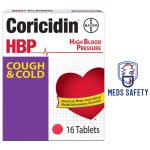WebMD Symptom Checker: Accuracy, How to Use It, Benefits, Limitations

The internet and advancements in technology have revolutionized the way we access health information, and WebMD, one of the most prominent health websites, has played a pivotal role in providing valuable resources to individuals seeking medical guidance. One of its notable tools is the WebMD Symptom Checker.
In this article, we will explore the accuracy of this tool, how to use it effectively, its benefits, and its limitations.
How accurate is the WebMD symptom checker?
WebMD Symptom Checker is a user-friendly tool that allows users to input their symptoms and receive a list of possible conditions that might be causing their discomfort. It employs an extensive database of medical information to generate these suggestions. While the WebMD Symptom Checker can be a useful starting point, it’s important to remember that it is not a substitute for professional medical advice.
The WebMD Symptom Checker is the most popular and frequently used symptom checker. Among the eight studies that assessed its performance, the findings revealed a range of diagnostic accuracy range of 3% to 53%. These studies encompassed a wide array of medical conditions, shedding light on both the strengths and limitations of this popular online tool.
However, the accuracy of the WebMD Symptom Checker varies depending on the user’s input and the complexity of the condition. It often provides a broad range of potential diagnoses, from mild to severe, which can be overwhelming. The tool is most accurate for common and easily identifiable symptoms, but it may not always pinpoint rare or complex conditions. Therefore, it is crucial to consult a healthcare professional for a more precise diagnosis.
How to Use It
1. Access the Tool: Visit the WebMD website and locate the Symptom Checker feature on the homepage or download the App on Google Play Store
2. Enter Your Symptoms: Start by typing in your symptoms, one at a time or all at once. The tool will offer auto-suggestions as you type.
3. Provide Additional Information: You may be asked to specify the location of your symptoms, the duration, and any additional factors such as fever or nausea.
4. Review the Results: Once you’ve input all the necessary information, the Symptom Checker will generate a list of possible conditions. Click on each condition to learn more about it.
5. Consult a Professional: While the results can be helpful, they should not replace professional medical advice. If you have concerns about your health, it’s essential to consult a healthcare provider for a thorough evaluation.
Benefits
1. Increased Health Awareness: WebMD’s Symptom Checker can help users gain a better understanding of their symptoms and possible conditions, promoting health awareness.
2. Quick Reference: It offers a convenient and quick reference for common symptoms, allowing users to research potential causes from the comfort of their homes.
3. Peace of Mind: For mild or common symptoms, the tool can offer reassurance and peace of mind, as it often suggests benign explanations.
4. Preparation for Medical Visits: Users can enter their symptoms into the Symptom Checker and use the information they gather as a starting point for discussions with healthcare professionals during appointments.
Limitations
1. Inaccuracies: The tool may provide a wide range of potential diagnoses, some of which may not be relevant or accurate, potentially causing unnecessary worry.
2. Lack of Context: It does not consider the user’s medical history, family history, or other individual factors that are critical in making an accurate diagnosis.
3. No Substitute for Professional Advice: The Symptom Checker is not a substitute for a healthcare provider’s evaluation. It should not be relied upon as a definitive diagnosis tool.
4. Overdiagnosis and Anxiety: There is a risk of overdiagnosis, where users may become overly concerned about serious conditions when their symptoms are relatively benign.
Frequently Asked Questions
1. How many body sections are there?
The Symptom Checker with Body Map offers 11 primary body regions and 41 sub-regions for you to select. For example, you can choose the primary region, like “arm,” or a more specific sub-region, such as “elbow.” Selecting sub-regions allows for a more precise symptom description.
2. What should I do if I’m not sure which body area to choose?
If you’re unsure about the exact location of your symptom, it’s advisable to begin with the primary body region. All symptoms listed in sub-regions, like “elbow,” are also included under the corresponding primary body region, like “arm.”
3. What if my symptom isn’t associated with a specific body location (e.g., “chills”)?
When you’re uncertain about the body area related to your symptom, you can either enter your symptom in the main search box or select the “General Symptoms” category. Additionally, there’s a dedicated section for skin symptoms.
4. What if I don’t see my symptoms on the list?
After choosing a body location, the tool initially displays the “most common symptoms.” However, you can switch to the “All” symptoms tab for a comprehensive list. Alternatively, you can use the category-specific search box for all symptoms in a particular category. The main search box on the homepage includes all symptoms from all categories.
5. What if I can’t find my condition or medication on the “Questions” page?
If your condition or medication doesn’t appear in the type-ahead list, it means we may not have sufficient information to include it in the results. In such cases, you can simply skip that field. Remember that all questions are optional, and you can proceed directly to the results.
6. Are there any other tips for using this symptom checker?
To navigate back to a previous page, please use the “back” or “previous” buttons within the tool, not your browser’s or phone’s back button, to avoid losing entered symptoms.
The results are ranked based on the similarity of your symptoms to specific conditions and their commonality in the United States. Extremely rare conditions may not be detected. For specific concerns, always consult a healthcare professional.
We highly recommend entering more than one symptom for improved accuracy in your results. Multiple symptoms can provide a more precise assessment of potential conditions.
Conclusion
WebMD’s Symptom Checker can be a valuable tool for those looking to understand their symptoms better, but it should be used cautiously. While it can provide a general idea of potential conditions, it is not a substitute for professional medical advice. Users should always consult with a healthcare provider for a comprehensive evaluation and diagnosis. The tool can play a useful role in increasing health awareness, offering quick references, and preparing users for medical visits, but it should be employed as one part of a broader approach to maintaining one’s health and well-being.





